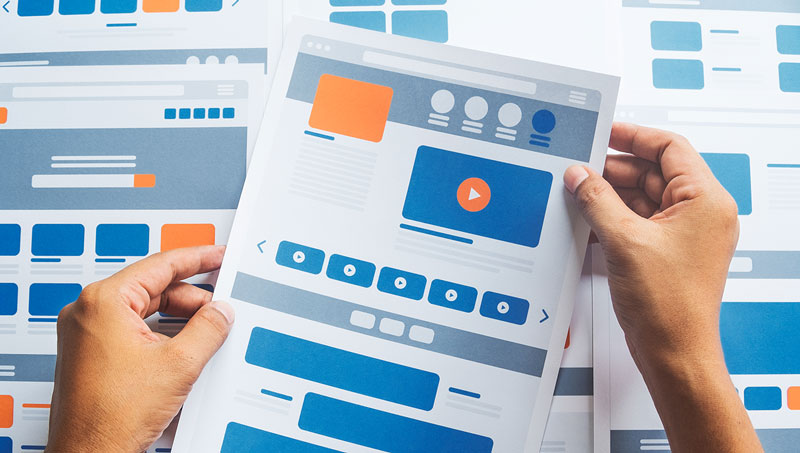
Improving your website’s user experience (UX) is crucial for boosting conversions, which ultimately leads to increased sales, subscriptions, or any other key performance indicator you prioritize. An optimal UX ensures that visitors not only stay on your site longer but also take desired actions with ease. Here are five effective ways to enhance your website’s user experience and boost conversions:
| Method | Pros | Cons |
| 1.Simplified Navigation | Enhances usability, reduces bounce rates, helps users find information quickly | Can be challenging to balance simplicity and comprehensive navigation |
| 2.Responsive Design | Ensures usability across devices, improves mobile traffic, aligns with SEO best practices | Requires additional testing and development resources |
| 3.Fast Loading Times | Reduces bounce rates, improves user satisfaction, positively impacts SEO | May require technical optimization, potential cost for better hosting or optimization tools |
| 4.High-Quality Content | Engages visitors, improves SEO, builds credibility and trust | Content creation can be time-consuming and requires consistent updates |
| 5.Clear Call-to-Actions | Directs users towards conversion goals, enhances user journey, increases conversion rates | Poorly designed CTAs can seem pushy or can clutter the design |
1. Simplified Navigation
Pros:
- Enhances Usability: Simplified navigation ensures that users can easily find what they are looking for without feeling overwhelmed. Clear, intuitive navigation makes for a seamless user journey, encouraging visitors to stay longer and explore more.
- Reduces Bounce Rates: When users can quickly find the information they need, they are less likely to leave your site out of frustration. Lower bounce rates are a positive indicator for search engines, potentially improving your site’s ranking.
- Quick Access to Information: Effective navigation helps users locate essential information quickly, improving overall satisfaction and likelihood of conversion.
Cons:
- Balancing Simplicity and Comprehensiveness: Stripping down navigation to its simplest form can be challenging. You need to ensure that all necessary links are easily accessible without overloading the user with too many options.
- Potential Overlook of Important Pages: Simplified navigation might lead to some pages being less prominent or even omitted, which can affect the visibility of important content or services.
2. Responsive Design
Pros:
- Usability Across Devices: A responsive design ensures your website functions well on various devices, including smartphones, tablets, and desktops. This adaptability is crucial as mobile traffic continues to rise.
- Improves Mobile Traffic: A mobile-friendly website can significantly enhance user experience for mobile visitors, who are increasingly forming a large portion of overall web traffic.
- Aligns with SEO Best Practices: Search engines like Google prioritize mobile-friendly websites in their rankings, meaning a responsive design can help improve your search engine optimization efforts.
Cons:
- Requires Additional Testing and Development Resources: Developing a responsive site can be resource-intensive. It requires thorough testing across multiple devices and screen sizes to ensure optimal performance.
- Potential for Complex Layout Issues: Ensuring that content scales appropriately and remains user-friendly on all devices can be technically challenging, potentially leading to higher development costs.
3. Fast Loading Times
Pros:
- Reduces Bounce Rates: Faster loading times are directly correlated with reduced bounce rates. Users are more likely to stay and explore a site that loads quickly, improving the chances of conversion.
- Improves User Satisfaction: Quick loading times enhance the overall user experience, leading to higher satisfaction and a greater likelihood of return visits.
- Positively Impacts SEO: Search engines use page load speed as a ranking factor. Faster websites are more likely to rank higher in search results, leading to increased organic traffic.
Cons:
- Technical Optimization Required: Achieving fast loading times often requires technical expertise to optimize images, scripts, and server response times.
- Potential Cost for Better Hosting or Optimization Tools: Investing in high-performance hosting solutions or optimization tools can incur additional costs.
4. High-Quality Content
Pros:
- Engages Visitors: High-quality, relevant content attracts and retains visitors, providing them with value and encouraging them to spend more time on your site.
- Improves SEO: Search engines reward websites that regularly publish high-quality content, helping to improve your search engine rankings and visibility.
- Builds Credibility and Trust: Informative and well-crafted content establishes your brand as an authority in your industry, fostering trust with your audience.
Cons:
- Time-Consuming: Creating high-quality content requires time and effort. Regular updates are necessary to keep the content fresh and relevant.
- Consistent Updates Needed: To maintain engagement and SEO benefits, content needs to be consistently reviewed and updated, which can be resource-intensive.
5. Clear Call-to-Actions (CTAs)
Pros:
- Directs Users Towards Conversion Goals: Well-placed and clearly worded CTAs guide users towards desired actions, such as making a purchase or signing up for a newsletter.
- Enhances User Journey: CTAs help streamline the user journey, making it clear what the next steps are and reducing any potential confusion.
- Increases Conversion Rates: Effective CTAs can significantly boost conversion rates by making it easy for users to take the next step.
Cons:
- Poor Design Can Seem Pushy: If not designed thoughtfully, CTAs can come across as too aggressive, potentially turning users away.
- Cluttered Design: Overusing CTAs can clutter the website design, making it difficult for users to navigate and diminishing the overall user experience
Conclusion
Enhancing your website’s user experience is a multifaceted approach that requires attention to design, content, performance, and user guidance. Simplified navigation, responsive design, fast loading times, high-quality content, and clear call-to-actions are key elements that, when implemented effectively, can significantly boost user satisfaction and conversion rates.
While each method has its pros and cons, the overarching goal is to create a seamless and enjoyable experience for your visitors, encouraging them to engage with your content and take desired actions. By focusing on these five strategies, you can create a user-friendly website that not only attracts visitors but also converts them into loyal customers or subscribers.

0 Comments